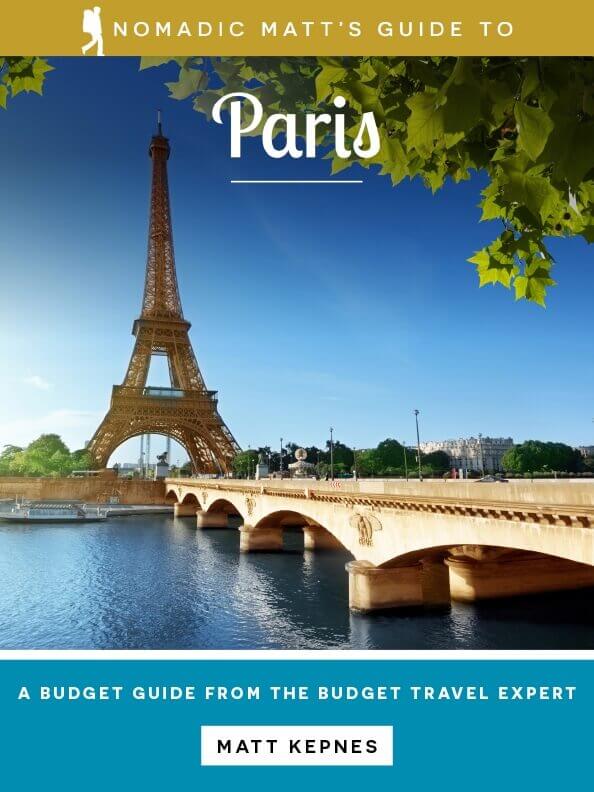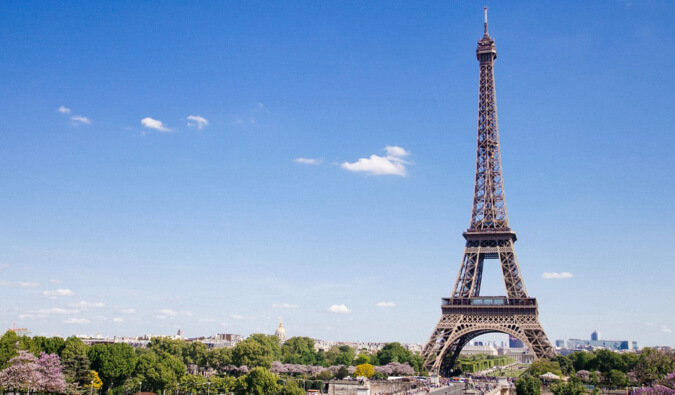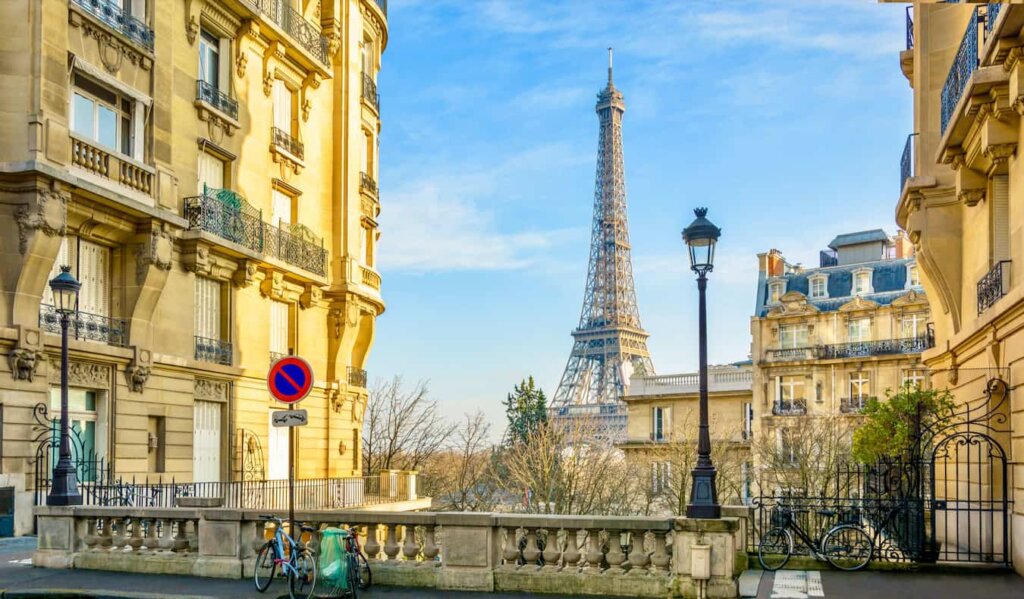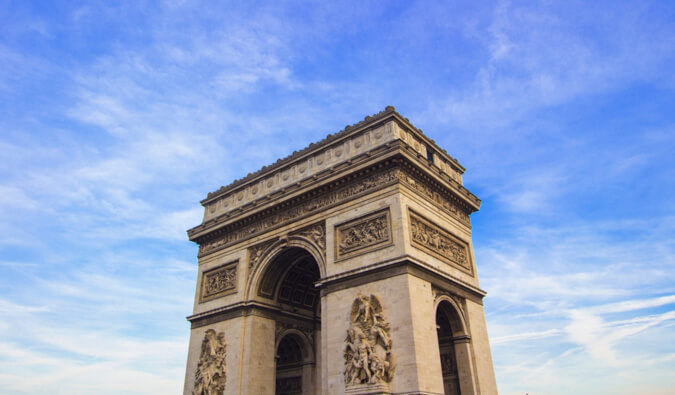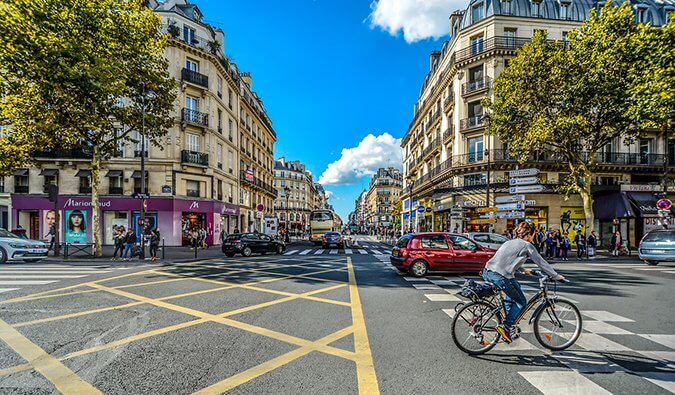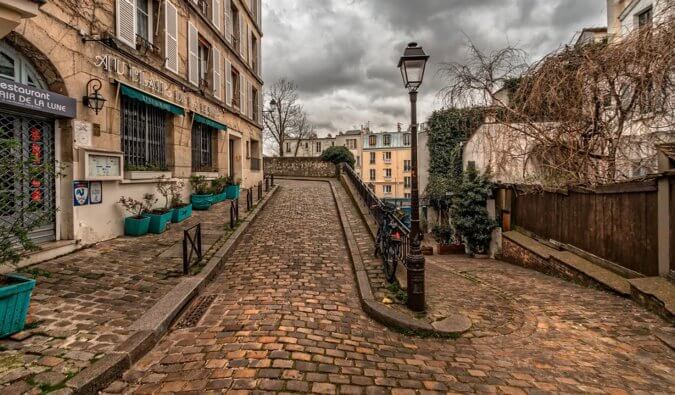Paris Travel Guide
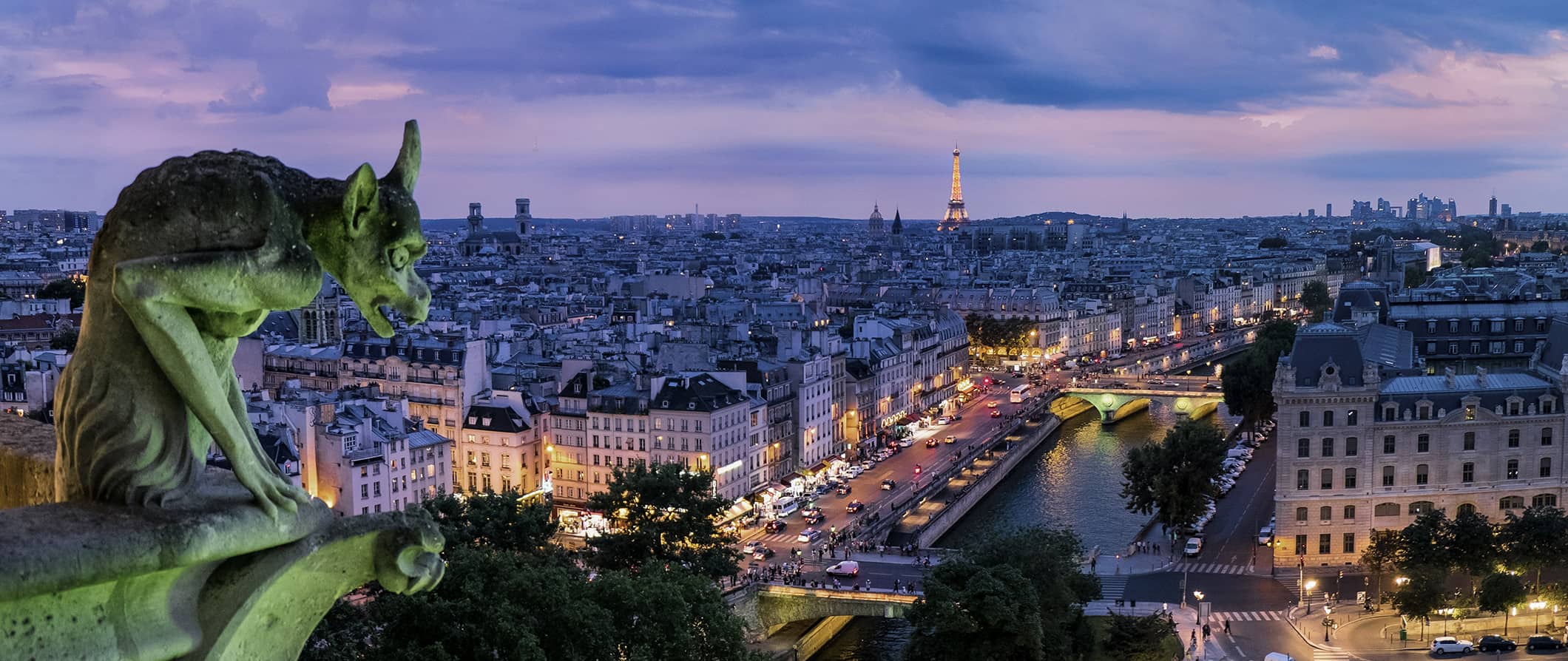
Paris. Poets, artists, playwrights, writers, journalists, and more have all written about their love of this city. It’s a place that exudes culture, sophistication, class, and style. Like the millions before me, I fell in love with this city the first time I visited.
Settled by Gallic tribes around the 3rd century BCE, the region was conquered by the Romans a couple of centuries later, turning it into a prosperous settlement. By 508, Paris was made the capital of the Merovingian dynasty. The city was sacked by Vikings in 845 but recovered to repel further Viking incursions. By the 12th century, Paris was the economic and cultural hub of all of France.
Today, Paris is one of the few iconic cities in the world that truly lives up to its hype. I’ve spent years visiting the city, have organized tours here, and even lived here for a bit. It is one of my absolute favorite places in the world. As Hemingway said, “If you are lucky enough to have lived in Paris as a young man, then wherever you go for the rest of your life, it stays with you, for Paris is a moveable feast.” He wasn’t wrong.
As iconic as it is, Paris is also gigantic, with thousands of years of history and a plethora of things to see and do, from world-class museums to Disneyland Paris. It would take a lifetime to explore it all. Fortunately, with a little planning, you can see the highlights over just a few days.
This travel guide to Paris can help you plan your trip, save money, and make the most of your visit to the City of Light!
Click Here for City Guides
Top 5 Things to See and Do in Paris
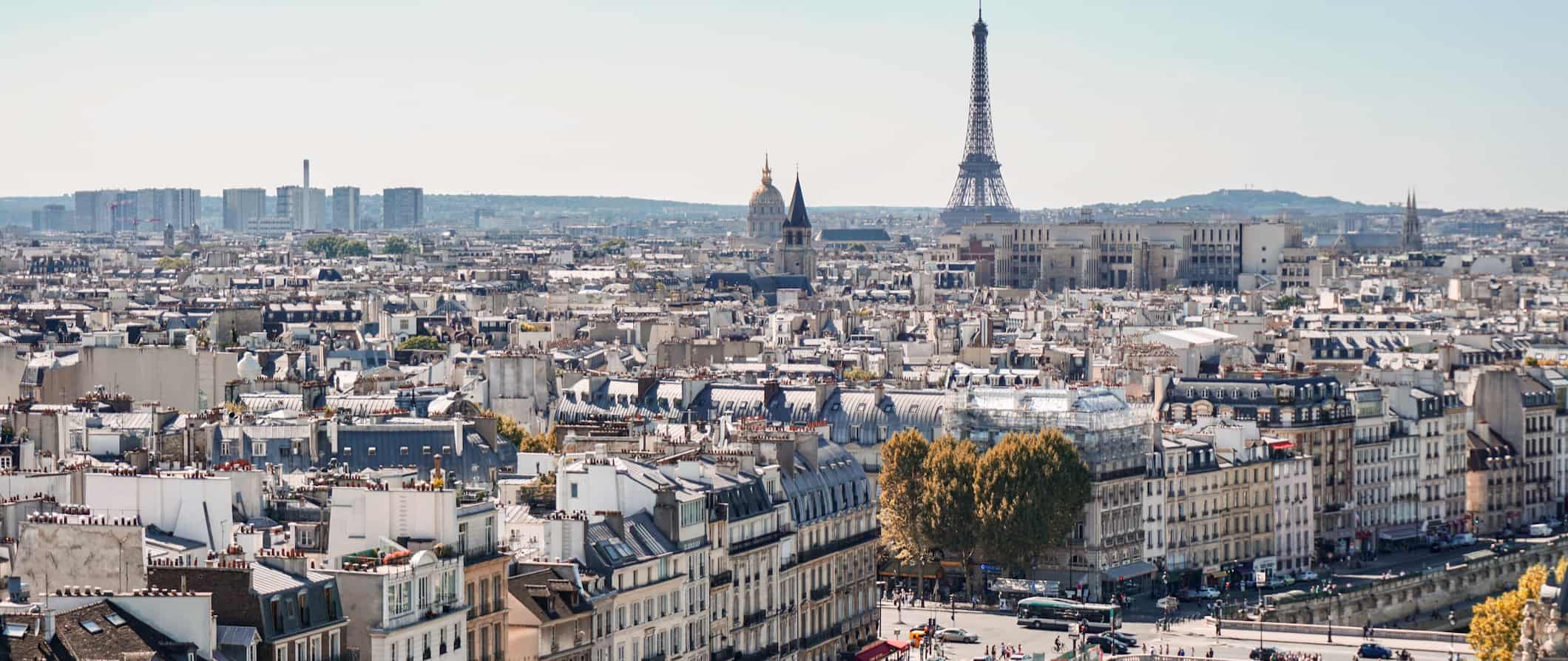
1. Scale the Eiffel Tower
Built for the 1889 World Fair, the 300-meter tower is an engineering feat that was originally hated by locals. They called it “the metal asparagus” and hoped it would be torn down. Now, it’s the most famous symbol of the city and every local will tell you they love it. It’s a beautiful building. If you’re going to go up to the top, get there early to avoid the lines. Tickets range from 16-26 EUR but I strongly suggest paying for direct access via an elevator that takes you to the top. It’s worth spending the money on as the line can take upwards of an hour on busy days. You can also get joint Eiffel Tower and river cruise tickets which help you save if you plan on doing both activities. Post-COVID, I would get your tickets in advance because the crowds and lines for tickets are really long.
2. Tour the Palace of Versailles
Visiting the famed 17th-century palace requires a whole day (don’t skip Marie Antoinette’s home or the spacious gardens that are located here). Originally, a hunting lodge, Louis XIV built this opulent palace to get the nobles out of Paris so they wouldn’t plan any coups. It was expanded over the years and filled with tons of allegorical statues and symbols reminding people that the power of the state rested with the king! The palace gets super crowded so try to go during the weekday, though summer weekends are the best time to visit the gardens, as the fountains are set to music then. Admission to the palace is 18 EUR and admission to the entire complex (including the gardens) is 27 EUR. For a more in-depth experience, this Versailles tour is led by a local expert guide and includes round-trip transportation from Paris at a time that avoids most of the crowds.
If you want to beat the crowds (which I highly recommend), skip-the-line tickets are available for 55 EUR. Since upwards of 10,000 people visit per day, skipping the line will save you a ton of time. The wait to get tickets can last hours.
3. Explore the Louvre
The Louvre is the biggest museum in the world, with thousands of square feet of space and millions of artifacts and works of art (including the Mona Lisa and the Venus de Milo). To see it all, you need at least two full days, but you can do the highlights in a full afternoon (especially if you take the Louvre Highlights Tour, which includes skip-the-line entry). Admission costs 17 EUR, while timed skip-the-line tickets are an additional 17 EUR. Due to capacity restrictions, you MUST get your ticket in advance. They sell out these days so if you don’t get your ticket in advance, you run the risk of showing up and being denied entrance.
Moreover go on Wednesday night when the museum is open until 11pm. There’s hardly anyone there after 7pm.
4. Wander the Latin Quarter
A historic area near Notre Dame, the Latin Quarter is filled with tiny, winding streets that turn at weird angles to open into little cafe-lined squares. I love wandering around here; it always feels like you’re stepping back a few hundred years in history. There are a lot of restaurants, bars, and jazz clubs here too. If you’d like to learn more about the area, this in-depth walking tour meanders through the Latin Quarter and includes skip-the-line tickets to the incredible Sainte-Chapelle, my favorite church in the city (read more below!). The tour is a perfect way to connect with a local guide who can share their insider tips and help you make the most of your visit.
5. Visit Sainte-Chapelle
This is my favorite church in Paris. Built in 1238 by Saint Louis, it was meant to house holy relics he found during the Crusades as well as serve as the Royal Chapel. I find this tiny Gothic chapel to be far more beautiful than the nearby Notre Dame. The (mostly) original interior décor is exquisite, including some of the few remaining examples of original stained glass in France. It’s absolutely beautiful. Entry costs 11.50 EUR and is likely to sell out so book your ticket in advance. Ticket holders skip the line too!
Other Things to See and Do in Paris
1. Go museum hopping
Paris has hundreds of museums worth seeing. Make sure to check out the Musee D’Orsay for great impressionist work, the amazing Rodin Museum, Holocaust Museum (one of the best in the world), Musee D’Orangerie (more impressionist work), and the interesting sewer museum. A Paris Museum Pass is the most affordable way to see them all as it provides access to over 50 museums in Paris and the surrounding region. A two-day pass costs 52 EUR, a four-day pass costs 66 EUR, and a six-day pass costs 78 EUR. It’s a must if you’re going to see at least 3 museums while in the city. Get it, save money, and (importantly) get to skip all the long lines that plague the city these days.
2. Stroll down the Champs Elysees
This is one of the most famous streets in the world and stretches from the Arc de Triomphe to the Louvre. It’s lined with expensive shops and restaurants and is always busy, but it’s a great place to club hop at night or shop during the day. Come in the very early morning to see the place utterly deserted. It makes for great photos. You can also take a guided tour if you want to learn more about the street and its history.
3. Visit the Panthéon
Located in the Latin Quarter, this Neoclassical building was originally built as a church but was turned into a state burial site for France’s heroes, including Marie Curie, Victor Hugo, Jean-Jacques Rousseau, Louis Braille, and Voltaire. Admission is 11.50 EUR. Like everything else, you’ll want to buy a ticket in advance to avoid the lines.
4. Relax in Jardin Du Luxembourg
The Jardin du Luxembourg (Luxembourg Garden) is the largest public park in Paris, covering 56 acres. The garden, which was first created in 1612, contains over a hundred statues, monuments, and fountains, all scattered throughout the grounds. The park was neglected for years until the French Revolution, after which Jean Chalgrin (the architect of the Arc de Triomphe) set about restoring and expanding the park. In the morning, you’ll see lots of runners exercising here. At lunch on a nice day, join park-goers in having a picnic.
5. Admire the view from Montmartre
Home to starving artists for over a century (since the Belle Époque in the 19th century), the neighborhood of Montmartre offers a stunning view of Paris, arty cafés and bars, cobblestone streets, and the only winery within the city limits (Vignes du Clos Montmartre). It’s one of the hipper parts of Paris, even if it has lost some of its old grandeur. It’s great for those wanting to visit the hangout spots of folks like Hemingway and Gertrude Stein. The iconic Sacré-Cœur basilica sits at the top of the hill. Climb the steps or sit on the sloping lawn and admire the views at dusk. Entrance to the basilica is free.
If you want to learn more about this iconic neighborhood, guided walking tours are the best way to do so (there’s a lot of history in this area and all the signs are in French) and include a visit to the basilica.
6. Visit Notre Dame
Paris’s Gothic masterpiece was constructed between 1163-1334. Climb from the north tower to the south to appreciate the masonry and get a close-up view of the Gallery of Chimeras, the fantastic birds and beasts gazing over the balustrade. The outside facade has been cleaned up in recent years, but the inside has a bit of that old Gothic grimy charm. To climb the tower, it costs 10 EUR. NOTE: Notre Dame is currently closed due to the 2019 fire.
7. Stand under the Arc De Triomphe
This monument stands in the center of the Place Charles de Gaulle and is one of the most famous landmarks in Paris. Inaugurated in 1836, the arch is dedicated to those who died in the French Revolutionary and Napoleonic Wars. For 13 EUR, visitors can climb 284 steps to the top of the Arc for stunning panoramic views and information about the city’s history. I think it’s one of the best views – and photo spots – in the city.
8. Celebrate Bastille Day
Every July 14th, a series of spectacular events in Paris celebrates the infamous storming of the Bastille during the French Revolution. The Bastille was a medieval armory and fortress and represented royal authority in Paris. Its capture was one of the biggest milestones of the Revolution. These days, there’s a huge televised parade and a never-ending fireworks display (head to Champ de Mars or the Jardins du Trocadéro for the best views of it all).
9. Experience the Cinema en Plein Air
Every July and August, Paris rolls out an inflatable screen in the Parc de la Villete for this major outdoor cinema event in the 9th arrondissement. It’s hugely popular with locals who tend to bring food and wine! It’s free to attend too.
10. Visit Maison du Victor Hugo
This beautiful apartment dates to 1605. Its most famous resident was the writer Victor Hugo (author of Les Misérables and The Hunchback of Notre Dame), who moved here when he was 30. His old apartment is now a museum dedicated to his life and writing. The museum is quite small, but Hugo lovers (like me) will find it very interesting. Each room is designed to showcase a specific period in his life, from his childhood to his death. Admission is free.
11. Climb through the Paris Catacombs
Underneath the city of Paris, you’ll find a honeycomb of tunnels, originally constructed as mining tunnels. The French resistance used these tunnels during World War II and rave parties flourished there during the 90s. Within this maze of tunnels lie the famous Catacombs of Paris, an ossuary containing the remains of over 6 million Parisians. This burial site was created in the 18th century due to public health concerns about overflowing cemeteries. It’s one of the freakiest and coolest sites in Paris. This walking tour with a local historian includes skip-the-line access (lines can regularly stretch around the block), while last-minute tickets cost 14 EUR, when available (they are often sold out, however).
12. Listen to Paris’ famous jazz music
Whether you prefer modern clubs or classic jazz joints, you shouldn’t leave Paris without tasting the music that attracted some of the best musicians and artists to the city. There is an especially abundant amount of good jazz clubs in the city. Le Duc des Lombards, which opened in 1984, is one of the most famous jazz clubs in the city. Harry’s Bar also has a lot of great music there too.
13. Take a walking tour
There are dozens upon dozens of companies covering all aspects of life in Paris, and it can be hard to make sense of all those endless Viator and TripAdvisor listings. Some are free, like New Europe’s tour, and go around the center of Paris, giving a historical overview of the city. Walks offer amazing in-depth tours starting from about 55 EUR. You’ll get specialized guides and skip the lines to big attractions, like the Louvre. I wrote a whole guide to the best walking tours in Paris!
14. Walk amongst the tombstones
The Pere-Lachaise Cemetery is Paris’ largest and most famous cemetery. In fact, it’s the most visited cemetery in the world and a peaceful, hauntingly beautiful area worth exploring. Look closely to spot the famous graves (Jim Morrison, Chopin, and Oscar Wilde are all buried here.) The cemetery was built in 1804 but locals considered the cemetery too far from the city. For that reason, Père Lachaise only had 13 graves its first year, however, administrators devised a plan to transfer the remains of Jean de La Fontaine and Molière, two of Paris’s most famous artists, to Père Lachaise. After that, everyone wanted to be buried here! You can read more about the cemetery here.
If you want, take a guided tour of the cemetery. You’ll learn a ton and won’t miss out on the most popular (and interesting) tombs. There’s no signs here so, without a tour, you won’t really learn much.
15. Visit the Mémorial de la Shoah
Despite having an excellent exhibit on France, anti-Semitism, and the Holocaust, the Mémorial de la Shoah never draws a lot of people. It’s a real shame, as there is a lot of in-depth information and a great collection here. I’ve been to many Holocaust museums, and this is one of the best and most detailed in the world. I highly recommend it. Admission is free.
16. Take a food tour
To learn more about the history and culture behind Parisian cuisine, take a food tour. It’s the best way to eat your way around the city, sampling the best eats Paris has to offer, all while learning what makes the cuisine unique. Devour Tours runs in-depth food tours led by expert local guides that will introduce you to the food culture and its history. If you’re a foodie like me who wants to learn more about the history and culture behind each dish, this tour is for you! Food tours range from 89-109 EUR.
17. Visit Fontainebleau
Located about ninety minutes south of Paris, Fontainebleau is another summer chateau. Though not as famous as Versailles, it’s still magnificent with a gilded dining hall, beautiful rooms, lots of art, an expansive garden, and lots of opulence. And there’s hardly anybody there because everyone goes to Versailles. The town of Fontainebleau is also super cute and filled with tons of good restaurants. I highly recommend going here. Too many people skip it but I think it’s one of the best chateaus in the Paris area!
How to Stay Safe in Paris
Paris is very safe and the risk of violent crime is very low. That said, as in all major cities, petty theft and pickpocketing are pretty rife here, especially on crowded public transportation and in busy tourist areas. Avoid flashing your valuables and always keep your possessions secure and out of reach.
There’s a lot of tourist scams here, especially one involving people getting you to sign a petition and then demanding money. Simply avoid anyone urging you to sign a petition by politely declining their offer. There’s also a ring scam and a card game scam that are common in the city. You can read about common travel scams to avoid here.
Solo female travelers should feel safe here, though the standard precautions occur (don’t leave your drink unattended at the bar, never walk home alone at night if intoxicated, etc.). For specific tips, I’d google solo female travel blogs as they can best give advice for Paris. To be extra safe, avoid walking around at night by yourself in certain neighborhoods, including Gare du Nord, Stalingrad, Jaures, and Les Halles.
Generally, your biggest issues in Paris will be tourist scams and petty theft.
If you experience an emergency, dial 112 for assistance.
Always trust your gut instinct. Avoid isolated areas at night and be aware of your surroundings at all times. Make copies of your personal documents, including your passport and ID.
The most important piece of advice I can offer is to purchase good travel insurance. Travel insurance will protect you against illness, injury, theft, and cancellations. It’s comprehensive protection in case anything goes wrong. I never go on a trip without it as I’ve had to use it many times in the past.
Where to Stay in Paris
Paris has lots of awesome hostels and budget hotels and, because of the city’s size, there are plenty of options to choose from. Here are some of my recommended places to stay in Paris:
- St. Christopher’s Canal
- The People – Belleville (formerly Les Piaules)
- Generator Hostel
- St. Christopher’s Gare du Nord
- Hôtel Thérèse
- Hôtel WYLD Saint Germain
- Hotel Bar Paris Bastille
For more hostel suggestions, check out my list of the best hostels in Paris. If you want more hotel options, read this post on the best hotels in Paris.
And, to find out exactly where in the city you should stay, here’s a post that breaks down the best neighborhoods in Paris.
Paris Travel Costs
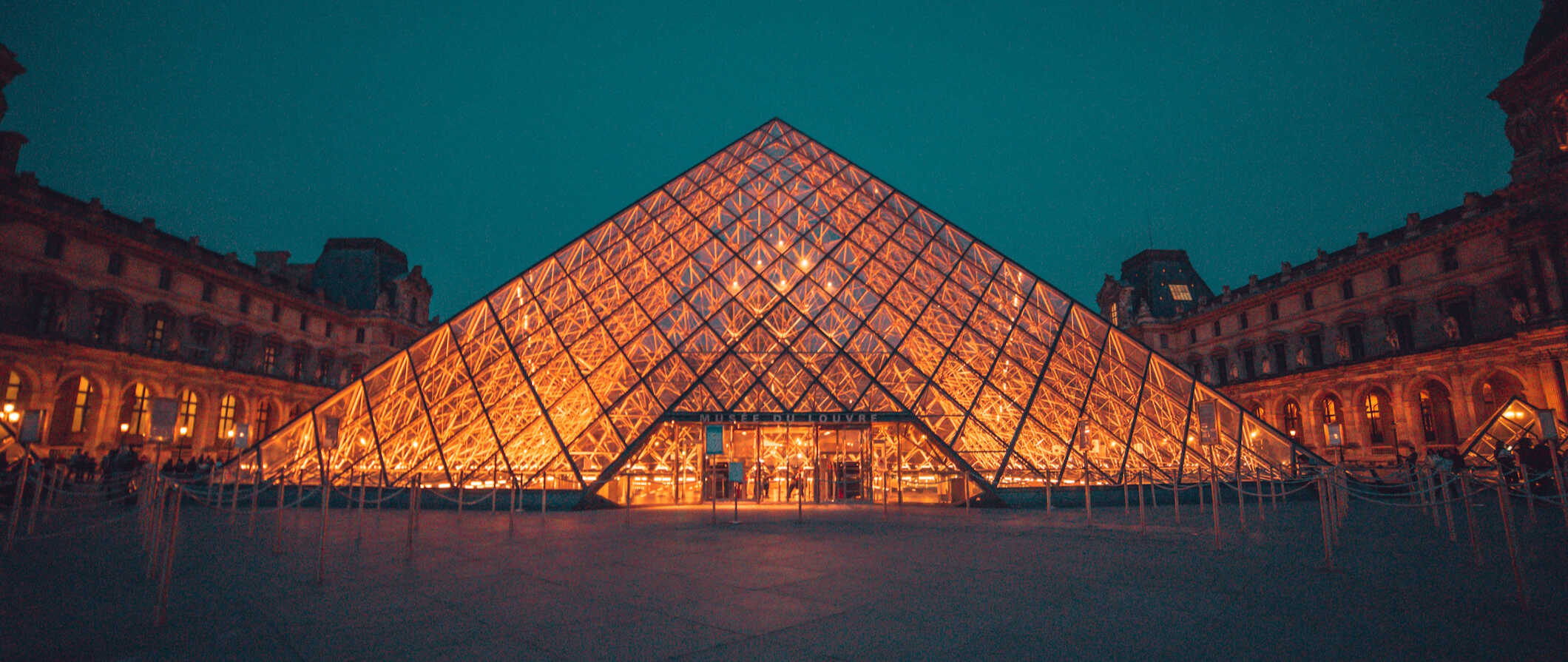
Accommodation
- Hostel dorms – 40-90 EUR per night
- Hostel private rooms – 150-235 EUR per night
- Budget hotels – 100-200 EUR per night
- Luxury hotels – 350+ EUR per night
- Airbnb private rooms – 70-100 EUR per night
- Airbnb apartments – 75-105 EUR per night
Expect prices 30-50% higher during the summer.
Food
- Prix-fixe lunch – 20-35 EUR
- Pre-made sandwiches – 6-12 EUR
- Casual take-out places – 15-18 EUR
- Sit-down restaurants – 35-50 EUR
- “Nicer” restaurants – 70-100 EUR
- Fast food (think McDonald’s) – 10 EUR
- Beer – 6-7 EUR
- Glass of wine – 3-6 EUR
- Cappuccino/latte- 2-4 EUR
- Bottled water – 2 EUR
- Groceries for a week – 50-60 EUR
Some of my favorite places to eat in the city are Bouillon Pigalle, Café Marlette Martyrs, Père & Fils, Bong, Crêperie des Arts, Le Dit Vin, and La Recyclerie.
Paris Suggested Budgets
Backpacker – 80 EUR Per Day
This budget covers staying in a hostel dorm, cooking your own meals and having picnics, taking public transit, limiting your drinking, and doing most cheap or free activities like free walking tours and free museums. If you plan on drinking more, add another 5-10 EUR to your daily budget.
Midrange – 175 EUR Per Day
This midrange budget covers staying in a private room, eating out for most of your meals at cheap fast food places, enjoying a few drinks, taking the occasional taxi, and doing more paid activities like going up the Eiffel Tower and visiting the Louvre.
Upscale – 500+ EUR Per Day
On this budget, you can stay at a nice hotel, eat out for all your meals, take more taxis, and do whatever tours and activities you want. This is just the ground floor for luxury though. The sky is the limit for spending in Paris!
Paris Travel Guide: Money-Saving Tips
Since Paris is expensive to visit, it’s important to find ways to save money. Luckily, there are A LOT of ways to save money while still experiencing the city’s beauty, charm, and cuisine. If you want to lower your costs, here are some high-impact ways to save money in Paris:
- Buy a metro card – Paris has over 300 subway stations, so it’s easy to get around the city using public transportation. A day pass is 13.95 EUR while a 10-ticket pass or “carnet” costs 17.35 EUR (both of these are much cheaper than paying 2.15 EUR for an individual ticket). The day pass, called ParisVisite, also provides discounts to some major Parisian landmarks.
- Have a picnic – With so many beautiful parks and outdoor gardens, it would be hard not to take advantage of picnicking. Eating in Paris is cheap when you do your own shopping. Buy some bread, cheese, and meat at the local shops and have an outdoor picnic. It’s fun and costs a fraction of what a meal in a restaurant would.
- Get the Paris Museum Pass – This prepaid card provides access to over 70 museums and monuments around Paris. A two-day pass costs 52 EUR, a four-day pass costs 66 EUR, and a six-day pass costs 78 EUR. This is perfect for the museum hopper. Since most people visit lots of museums in the city, you’re pretty much guaranteed to save money.
- Get the Paris Pass – This is a super-sized version of the Paris Museum Pass and is for people who want to do heavy sightseeing in a short period of time. You can purchase a two-day pass for 109 EUR, a three-day pass for 129 EUR, a four-day pass for 149 EUR, or a six-day pass for 169 EUR. It includes a TON of sights (75+ attractions), the ability to skip lines, and a hop-on, hop-off bus tour (in addition to everything in the Paris Museum Pass).
- Redeem hotel points – You can get hotel credit cards and use those points to cover accommodations when you travel. You’ll get 1-2 nights free with most cards when you sign up, which can save a lot of money in a city like Paris. Here’s my post that will help you understand the basics so you can start earning points now and have plenty for your trip
- See museums for free – All national museums offer free admission on the first Sunday of every month. If you happen to hit this day, be aware of potentially large crowds and long lines.
- Dine out during lunch – Food in Paris is not cheap. It costs you an arm and a leg to eat here, but during lunch, many restaurants offer a pre-fixe menu for 10-20 EUR. It’s the same food you would buy for dinner but at half the cost. When I eat out in Paris, I do so during lunch so I can still eat amazing French food without it eating my entire wallet!
- Cook your meals – The best way to save money on the road is to cook your own meals. Many hostels, campsites, and guest houses have kitchens. No kitchen? Pack your own container and silverware and make some sandwiches and salads on the go.
- Stay with a local – I highly recommend trying to find a host on Couchsurfing (or similar apps) so that you can get a kitchen, a place to stay, and a local friend to show you around. The community here is very active and friendly!
- Take a free walking tour – If you want to get a great overview of Paris, take a free walking tour with New Europe Tours. These 2-3 hour tours will give you a good overview of the city, help you get your bearings, and give you someone to ask for cheap eats and things to do! Just don’t forget to tip your guide at the end!
- Remember that water is free – When you order water at a restaurant, make sure you ask for tap water. They’ll try to provide bottled water and charge you for it, but tap water is free and safe to drink.
- Bring a water bottle – Since the tap water here is safe to drink you should bring a reusable water bottle to save money and reduce your plastic use. LifeStraw is my go-to brand as their bottles have built-in filters to ensure your water is always clean and safe. There are water filling stations throughout the city.
(Hey there! Wait one second! My guidebook to Paris is filled with – not only even more detailed information on the things included on this page but also itineraries, maps, practical information (i.e. hours of operation, phone numbers, websites, prices, etc.), cultural insights, and so much more? It has everything you want in a guidebook – but with a focus on budget and cultural travel! If you want to go into more depth and have something to take on your trip, click here for more about the book!)
How to Get Around in Paris
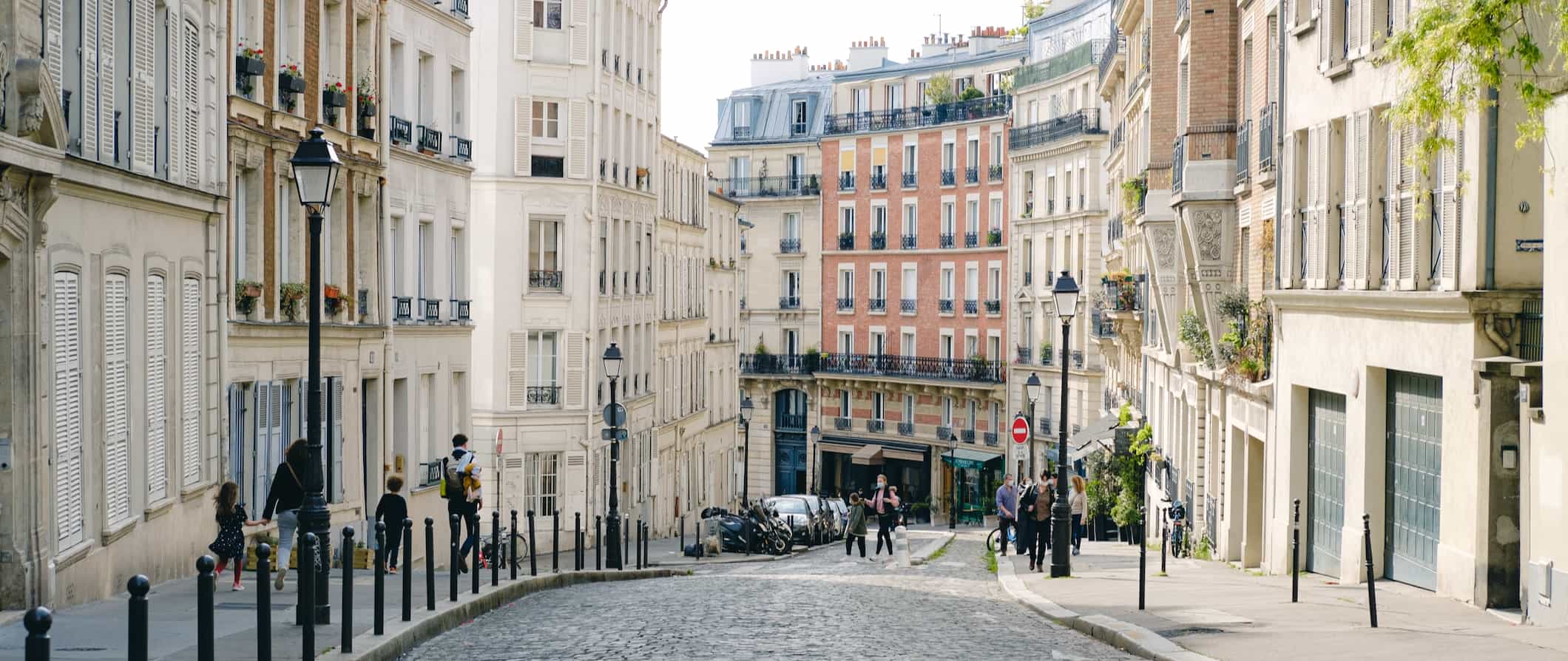
Public transportation – The Paris public transport system is one of the world’s most comprehensive and efficient. Every other block has a metro (subway) stop. A single-use metro/bus ticket costs 2.15 EUR (2.50 EUR if you buy it on the bus).
A “carnet” of 10 single-use tickets costs 17.35 EUR. You can get a one-day to five-day pass (a ParisVisite) for all modes of public transportation (bus, metro, trams, and suburban trains called the RER) for between 13.95-44.45 EUR. It also gives you discounts on some major Parisian landmarks. You can buy tickets at any metro station.
(Note: There are cheaper day passes available if you are under 26, as well as discounted prices on weekends and holidays, but they are only explained on the French website. If you can speak passable French and are under 26, you can ask for those reduced fares instead.)
The RER is an above-ground train that has five lines serving Paris and Ile-de-France. It works exactly like the metro and uses the same tickets, although you’ll have to use your ticket in the automatic barriers on your way out of the station as well (unlike the metro). If you have a connecting journey with the metro, you can use the same ticket.
There are 64 bus lines in Paris’s metro network. If you already have your single-use metro/bus ticket, it costs 2.15 EUR. Otherwise, you’ll have to buy a ticket on the bus for 2.50 EUR. Your ParisVisite pass also works on the bus.
There are four tram lines in Paris that navigate the city’s perimeter. They work on the same ticketing system as the metro, RER, and bus.
The airport RoissyBus to Paris-Charles de Gaulle (CDG) costs 12 EUR each way. The bus to Paris-Orly (ORY) costs 10.30 EUR each way.
Bike-sharing – Velib’ is Paris’s public bike-sharing program. A single trip is 3 EUR, while a one-day pass is 5 EUR and a 3-day pass is 20 EUR. If you’d like to take out an electric bike, a one-day pass is 10 EUR.
E-scooters – Electric scooters have quickly become a popular way to get around in Paris. There are a few different companies, including Lime and Tier, but most cost around the same price: around 1 EUR to unlock the scooter, .15-.20 EUR per minute thereafter.
Taxi – Taxis in the city are expensive (rides cost a minimum of 7.10 EUR regardless of where you are going). With the metro running late into the night, there’s little reason to take them. Avoid them if you can. Uber is available in Paris but, again, it’s largely unnecessary as the public transportation is so great.
Car rental – Driving in Paris is a nightmare — even locals hate driving in the city. Avoid renting a car here. You won’t need one anyway as the bus and train can get you out of the city easily and on a budget. For the best deals, I use Discover Cars.
When to Go to Paris
Summer is the most popular (and most expensive) time to visit Paris. Average daily summer temperatures are in the low 20°Cs (high 70°Fs). While the weather is great, that also means the crowds are huge and wait times for major attractions are long. This is the most crowded time of year. (And, keep in mind, most French people leave during August for vacation.) If you are visiting in the summer, be sure to book your accommodation and activities in advance.
I think the best time to visit is May-early June and September-October. During these times, there are fewer crowds, prices are lower, and the weather is still sunny and warm. Temperatures are often around 20-23°C (68-73°F) making this a good season to stroll around outside without tons of layers on or the sweltering sun beating down on you.
Winter can be dark and chilly, but while the weather may not be perfect, Paris is particularly beautiful in the winter. It’s also the best time to find cheap airfare and hotel deals. Although Paris is never free from tourists, it does get less crowded at this time of year. This can be a great time to visit if you plan on spending most of your time in museums and historic sites. It’s also the rainiest during this time. Expect daily highs around 7°C (44°F).
Paris Travel Guide: The Best Booking Resources
These are my favorite companies to use when I travel. They consistently have the best deals, offer world-class customer service and great value, and overall, are better than their competitors. They are the companies I use the most and are always the starting point in my search for travel deals.
- Skyscanner – Skyscanner is my favorite flight search engine. They search small websites and budget airlines that larger search sites tend to miss. They are hands down the number one place to start.
- Hostelworld – This is the best hostel accommodation site out there with the largest inventory, best search interface, and widest availability.
- Booking.com – The best all around booking site that constantly provides the cheapest and lowest rates. They have the widest selection of budget accommodation. In all my tests, they’ve always had the cheapest rates out of all the booking websites.
- Get Your Guide – Get Your Guide is a huge online marketplace for tours and excursions. They have tons of tour options available in cities all around the world, including everything from cooking classes, walking tours, street art lessons, and more!
- SafetyWing – Safety Wing offers convenient and affordable plans tailored to digital nomads and long-term travelers. They have cheap monthly plans, great customer service, and an easy-to-use claims process that makes it perfect for those on the road.
- LifeStraw – My go-to company for reusable water bottles with built-in filters so you can ensure your drinking water is always clean and safe.
- Unbound Merino – They make lightweight, durable, easy-to-clean travel clothing.
- Top Travel Credit Cards – Points are the best way to cut down travel expenses. Here’s my favorite point earning credit cards so you can get free travel!
- BlaBlaCar – BlaBlaCar is a ridesharing website that lets you share rides with vetted local drivers by pitching in for gas. You simply request a seat, they approve, and off you go! It’s a cheaper and more interesting way to travel than by bus or train!
- Take Walks – This walking tour company provides inside access to attractions and places you can’t get elsewhere. Their guides rock and they have some of the best and most insightful tours in all of France.
GO DEEPER: Nomadic Matt’s In-Depth Budget Guide to Paris!
There’s a lot of free information online but do you want to spend days searching for information? Probably not! That’s why guidebooks exist.
While I have a lot of free tips on Paris, I also wrote an entire book that goes into great detail on everything you need to plan a trip here on a budget! You’ll get suggested itineraries, budgets, even more ways to save money, my favorite restaurants, maps, prices, practical information (i.e. phone numbers, websites, prices, safety advice, etc.), and cultural tips.
I’ll give the insider view of Paris that I got from living and running tours here! The downloadable guide can be used on your Kindle, iPad, phone, or computer so you can have it with you when you go.
Paris Travel Guide: Related Articles
Want more tips for your trip? Check out all the articles I’ve written on Paris travel and continue planning your trip:

